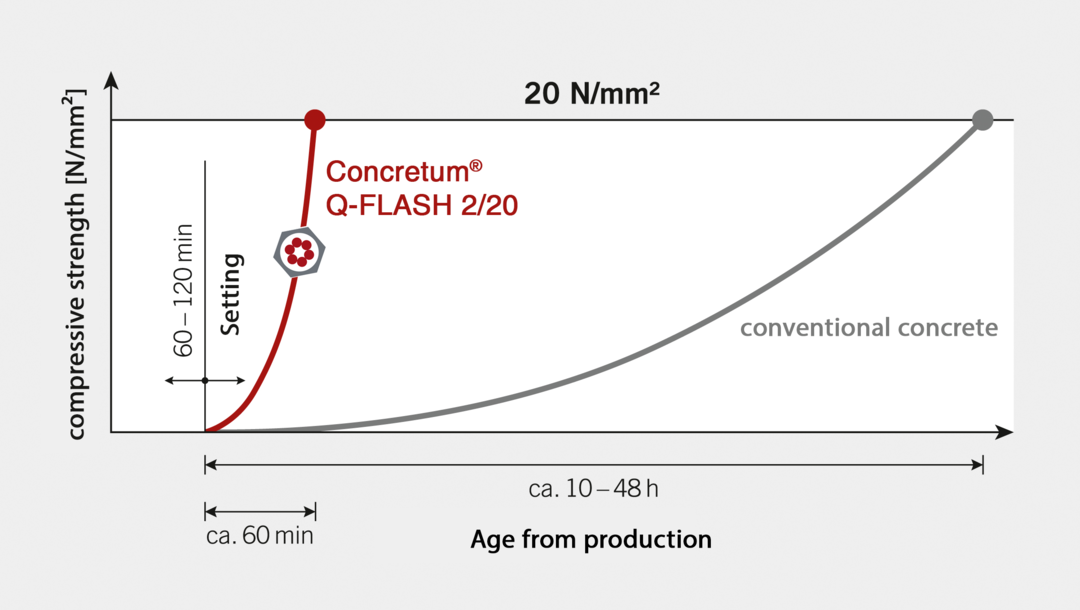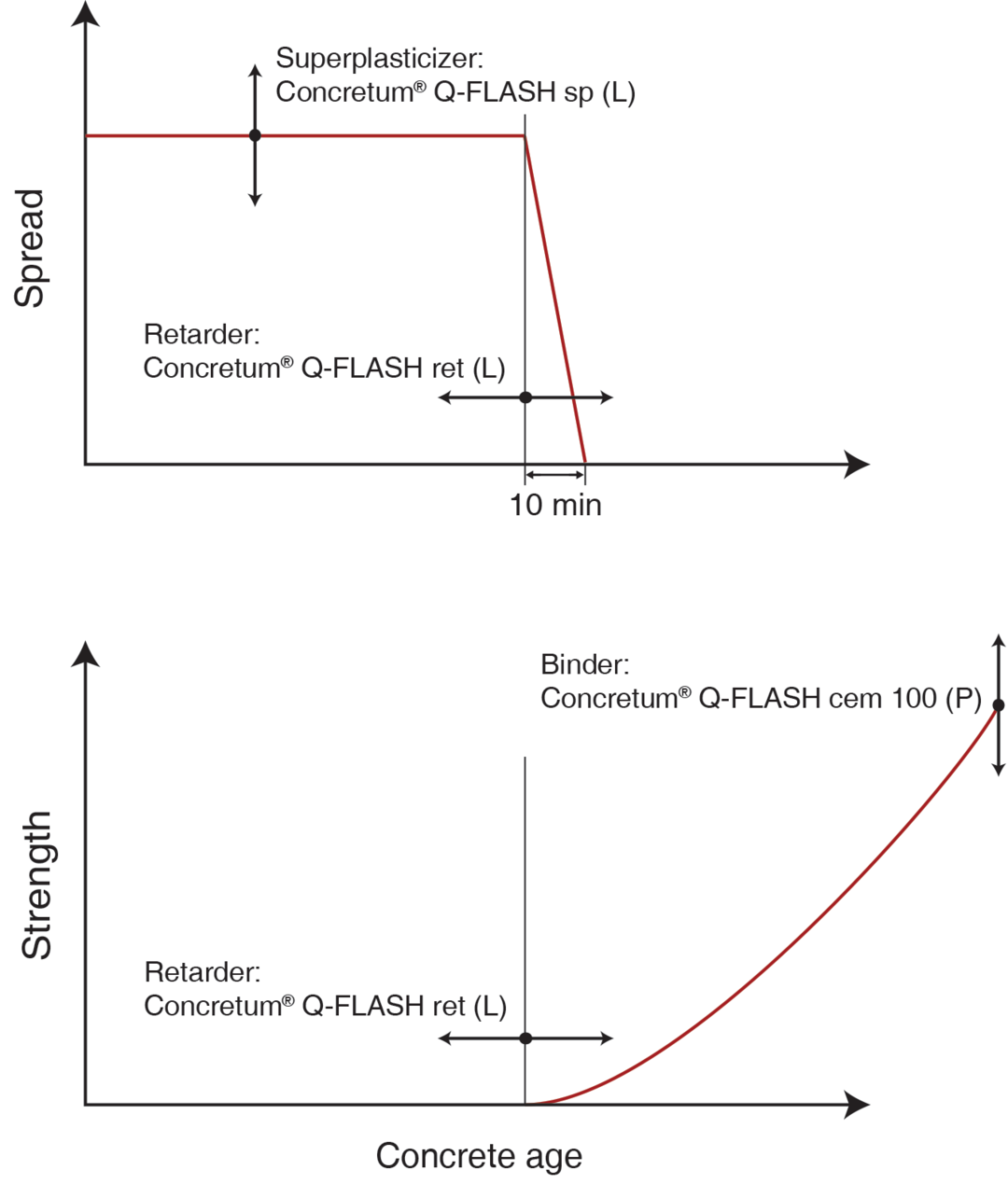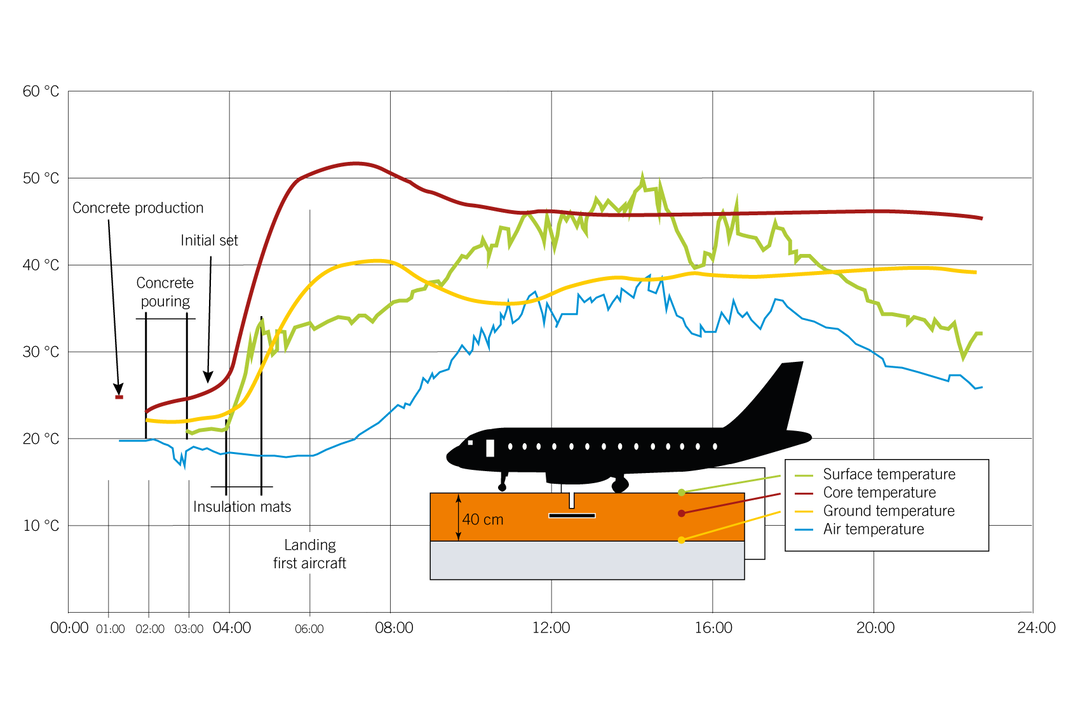Rapid Hardening of Concrete
Durability of rapid-Hardening Concrete and Mortar
Concretum's® Q-FLASH rapid-hardening concretes and mortars are based on the latest rapid cement technology. Instead of relying on a single rapid cement, they utilize a combination of various Portland cement-like components.
This so-called compound is formulated to ensure that the heat of hydration is significantly lower than that of traditional rapid cement systems, making it comparable to normal Portland cement. Another positive feature of Concretum's rapid-hardening concrete technology is its low shrinkage rate. It is even lower than the average shrinkage values of normal concrete and is on par with those of shrinkage-reducing concretes. The low heat of hydration, low shrinkage, high frost resistance, and high density of Concretum rapid-hardening concretes and mortars ensure exceptional durability for the structures made from them.
Handling Concretum Rapid-Hardening Concrete and Mortar
Concretum Q-FLASH rapid-hardening concretes are manufactured and processed in a manner similar to that of standard concretes. Concretum® Q-FLASH 2/20 is a three-component system:
1. Cement Compound (to control the rapid hardening of the concrete)
2. High-Performance Flow Agent (to control the consistency)
3. Setting Delay Agent (to determine the beginning of setting and to compensate for temperature fluctuations)
The following parameters can be adjusted for different requirements:
- Open time between 60 and 120 minutes (up to 180 minutes in exceptional cases)
- Temperature range: 5°C to 33°C (fresh concrete temperature)
- Consistency: stable to pumpable (consistency classes C1 to C3)
- Good workability and easy surface processing (broom finishing, trowelling, etc.)
Hardening of Concretum Rapid-Hardening Concrete and Mortar
Concretum rapid-hardening concrete behaves almost identically to normal concrete up until the beginning of setting (the same applies to the rapid mortar in comparison to normal mortar). However, once the end of the open time is reached, the hardening process accelerates significantly. The formation of ettringite (cement stone formation) occurs about 100 times faster than with normal Portland cement. Within minutes, a solid and dense cement stone structure forms. About 60 minutes after the start of the hardening process, strength values of ≥ 20 N/mm² are achieved (normal concrete and mortar require approximately 2 days for this).
The rapid hardening process also leads to quick drying of the concrete, as a large amount of free pore water is chemically bound in a short time. Within 2 to 3 hours, the moisture content drops below 4.0 CM%, which, for example, is an ideal condition for the application of many sealing systems. Thus, the concrete reaches the values that normal concrete only achieves after approximately 4 weeks, all within just 3 hours—despite the fact that the entire fresh concrete processing is similar to that of normal concrete. This rapid cement-based technology is fundamentally different from conventionally accelerated concretes. While suitable high-performance flow agents and cements with high fineness (e.g., CEM I 52.5 R) can also accelerate hardening, they cannot match the scope of specialized rapid-cement compounds.
Production & Applications
Concretum rapid-hardening concrete can be produced in two ways:
1. In a Concrete Plant – just like normal concrete
2. In a Transit Mixer Directly on the Construction Site
The choice between these two production methods allows for high flexibility in construction processes, enabling entirely new construction methods, such as:
- Runway repairs
- Lowering tunnel floors
- Repair of concrete pavements
- Installation of large areas using a slipform paver
Concretum rapid-mortar is produced in powerful compulsory mixers or with double-shaft hand mixers, similar to conventional repair mortars, and only requires mixing with water.
Low Heat of Hydration
Unlike conventional rapid-concretes, which rely on high cement fineness or the addition of hardening accelerators, Concretum® Q-FLASH 2/20 uses a special rapid-hardening cement. This fully mineral-based specialty cement utilizes a novel mechanism for strength development, resulting in much lower heat of hydration. The heat of hydration of the cement is approximately 210 J/g, which corresponds to a so-called LH cement (Low Heat).
Measurements (see graph below) show that the concrete temperature of Concretum rapid-hardening concrete develops very moderately compared to normal concrete.
In practice, it is commonly assumed that a temperature difference of up to 30°C between the fresh concrete temperature and the maximum hydration heat is not concerning in terms of crack formation due to restraint stresses.



